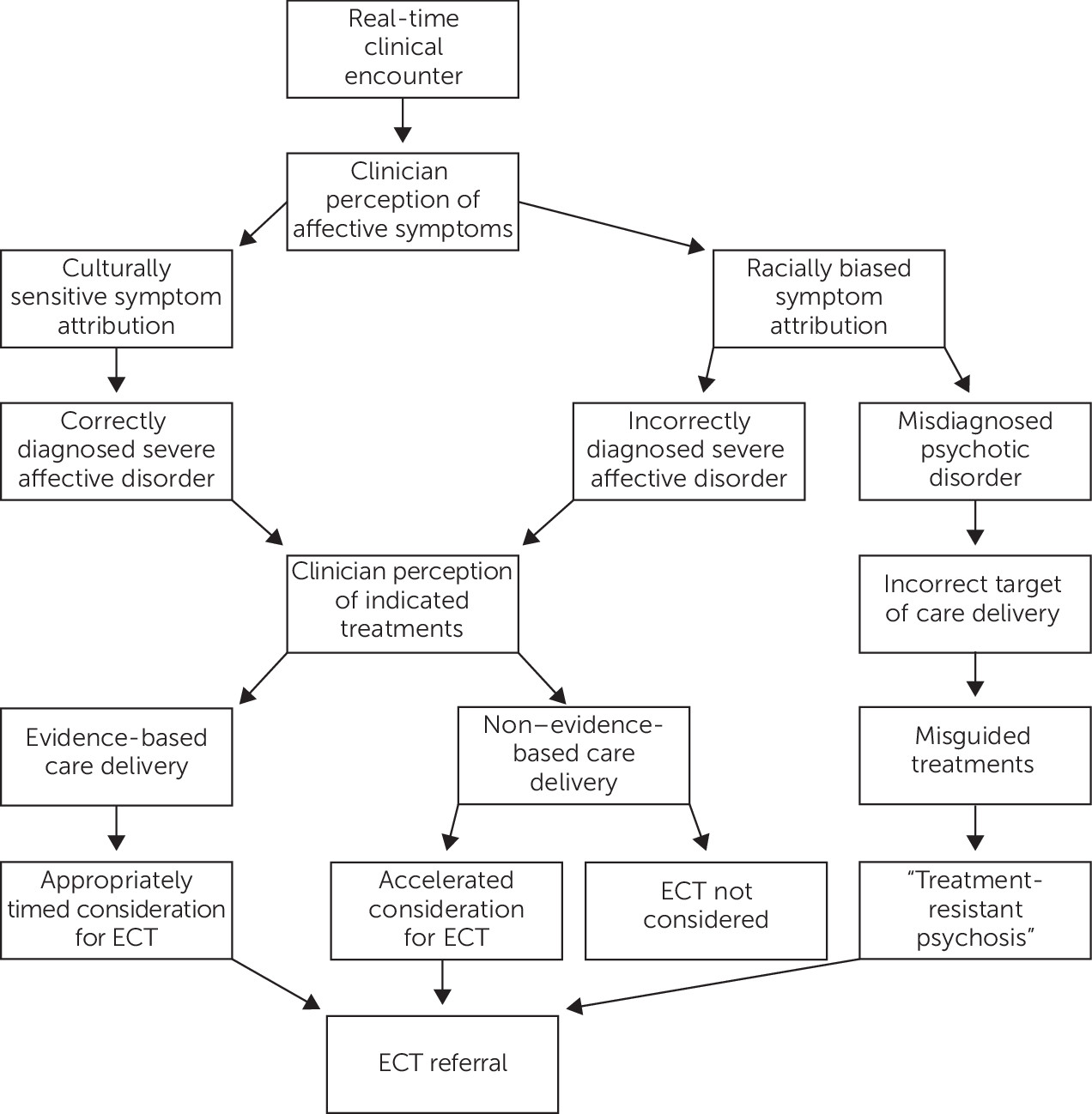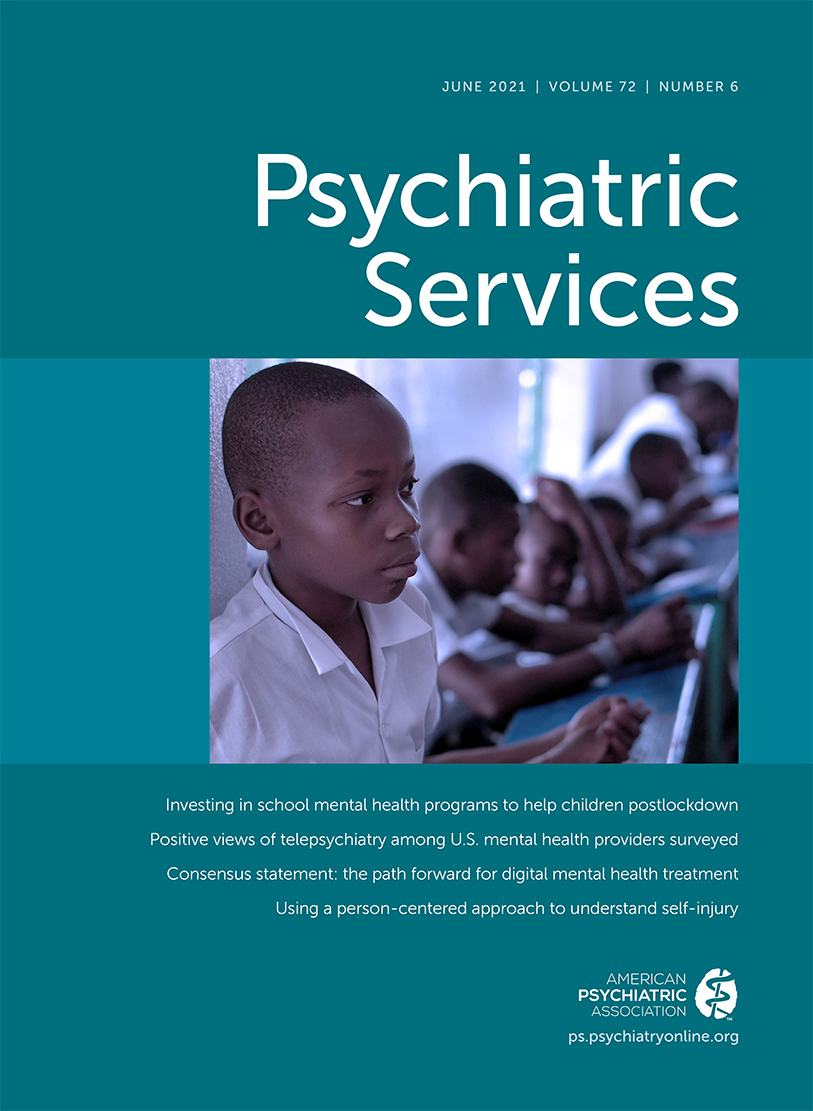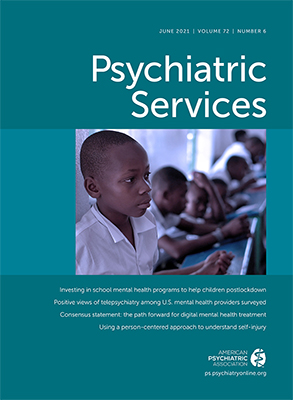Clinicians’ Racial Bias Contributing to Disparities in Electroconvulsive Therapy for Patients From Racial-Ethnic Minority Groups
Abstract
HIGHLIGHTS
Focus on Provider Racism
Provider Racial Bias and Interpersonal Efficacy of Real-Time Clinical Encounters
Physician Demographic Characteristics

Interpersonal Effects of Provider Racial Bias and Aversive Racism During Real-Time Encounters
Safeguarding Against Provider Interpersonal Racial Bias in Clinical Encounters
Diagnosis (or Misdiagnosis) as the Entry Point to ECT Service Delivery
Provider Interpersonal Racial Bias and Its Influence on Symptom Attribution and Misdiagnosis
Safeguarding Against Provider Racial Bias in Symptom Attribution and Diagnosis
Provider Racial Bias and Misdiagnosis Influencing ECT Racial Disparities
Incorrect Targets of Care Delivery
Racially Biased Clinical Rationale Deviating From Evidence-Based Practices for ECT
Safeguarding Against Provider Racial Bias in Consideration of and Referral to ECT
Conclusions
Footnote
References
Information & Authors
Information
Published In
History
Keywords
Authors
Funding Information
Metrics & Citations
Metrics
Citations
Export Citations
If you have the appropriate software installed, you can download article citation data to the citation manager of your choice. Simply select your manager software from the list below and click Download.
For more information or tips please see 'Downloading to a citation manager' in the Help menu.
View Options
View options
PDF/EPUB
View PDF/EPUBLogin options
Already a subscriber? Access your subscription through your login credentials or your institution for full access to this article.
Personal login Institutional Login Open Athens loginNot a subscriber?
PsychiatryOnline subscription options offer access to the DSM-5-TR® library, books, journals, CME, and patient resources. This all-in-one virtual library provides psychiatrists and mental health professionals with key resources for diagnosis, treatment, research, and professional development.
Need more help? PsychiatryOnline Customer Service may be reached by emailing [email protected] or by calling 800-368-5777 (in the U.S.) or 703-907-7322 (outside the U.S.).

